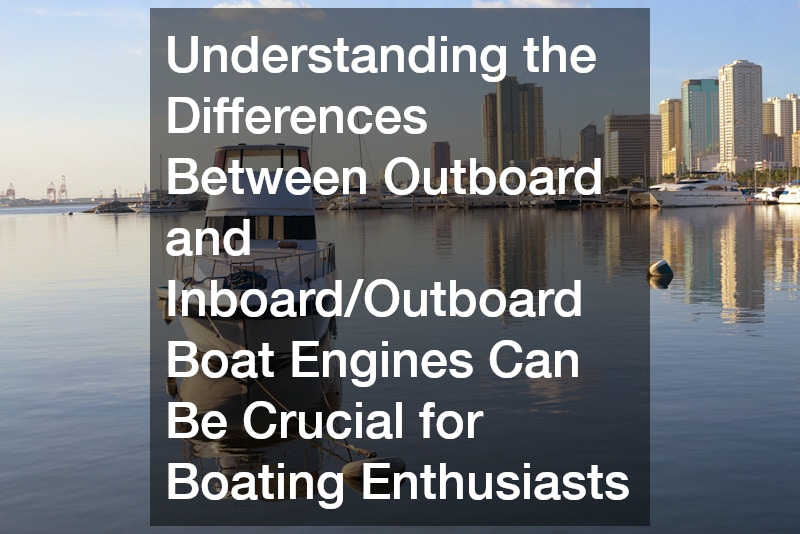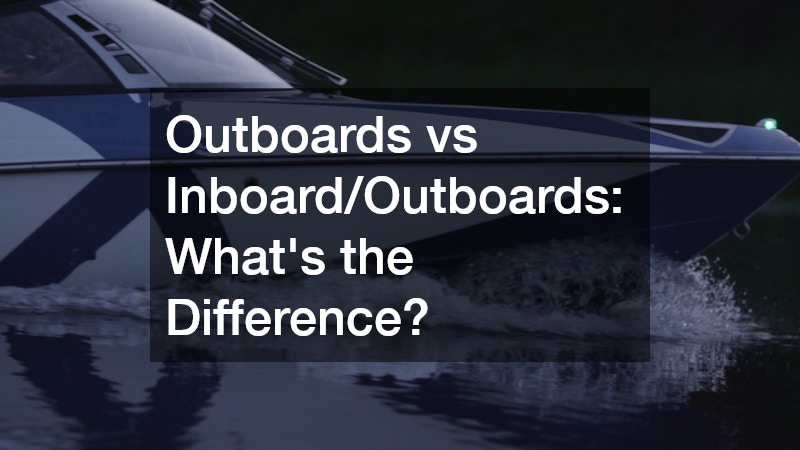
Understanding the differences between outboard and inboard/outboard boat engines can be crucial for boating enthusiasts and potential buyers. In this article, we will explore key distinctions and provide insights into which type might be best suited to your needs. Choosing the right kind of engine not only affects performance and maintenance but also plays a significant role in the overall boating experience.
The choice between outboard and inboard/outboard engines often boils down to personal preference and the specific demands of one’s boating activities. Boaters must consider various factors such as ease of maintenance, durability, and adaptability to different water conditions.
Both engine types have evolved over time, with manufacturers incorporating innovations to cater to diverse needs.
By delving into the technical features and practical implications of each engine type, we aim to equip you with a comprehensive understanding. This holistic view will assist in making an informed decision, ensuring that your choice aligns with your boating lifestyle, whether for leisurely cruising, fishing, or high-performance activities.
How Do Outboard Motors Differ from Inboard/Outboard Motors?
Examining the fundamental design and functional distinctions between these two motor types is essential for grasping their unique advantages and limitations. Outboard motors are self-contained units, typically mounted on the rear of the boat. They encompass the engine, gearbox, and propeller, designed for easy maneuverability and removal.
In contrast, inboard/outboard motors, also known as stern drives, combine the features of both inboard and outboard engines. The engine is mounted inside the boat, connected to a drive unit that extends through the transom to support the propeller. This configuration can optimize space within the boat, making it ideal for families and groups who require a roomier interior.
Additionally, outboard motors have become synonymous with versatility, allowing for higher speed and efficiency in various water conditions. They offer superior handling, particularly in shallow waters, making them a favorite among anglers and recreational boaters. Meanwhile, inboard/outboards provide a smoother ride in rough waters, thanks to their more stable weight distribution.
What Are the Pros and Cons of Outboard Engines?
This section will delve into the specific benefits and drawbacks of choosing outboard engines, considering aspects like maintenance, performance, and installation. One of the standout benefits of outboards is their ease of maintenance. Since they are mounted externally, accessing the engine for repairs or routine check-ups is typically straightforward.
Performance is another area where outboards excel. With advancements in technology, modern outboards can deliver impressive horsepower, contributing to higher speeds and improved fuel efficiency. This makes them particularly appealing for smaller boats or those focused on speed and agility.
However, there are drawbacks to consider as well. Outboard engines are more exposed to the elements, which can lead to corrosion and increased wear if not properly maintained. Additionally, while installation might be easier due to the external mounting, it could limit space for other functions at the stern, such as swimming or fishing.
Why Might Boaters Choose Inboard/Outboard Engines?
Here, we will explore reasons behind opting for inboard/outboard engines, focusing on their versatility and how they might align with different boating activities. One notable advantage is the balance these engines provide between performance and in-deck space utilization, offering a smoother ride while preserving interior space.
Inboard/outboard engines are known for their efficiency in converting engine power to propulsion, which benefits fuel economy over long distances. This makes them an excellent choice for those who enjoy extended cruising or need a reliable engine for unpredictable water conditions.
However, the maintenance can be more involved, as it often requires accessing the engine compartment within the boat. On the plus side, the enclosed engine is better protected from the elements, potentially extending its lifespan. Additionally, the positioning of the drive system helps enhance maneuverability in certain conditions, such as docking or navigating tight spaces.
Both outboards and inboard/outboards offer unique benefits, and the choice between them depends on individual preferences, usage requirements, and long-term goals. By understanding their differences and similarities, boaters can make informed decisions to enhance their marine experiences. Each engine type serves a niche within the boating community, and advancements continue to blur the lines between performance and practicality.
Ultimately, the decision rests on what features align most closely with your lifestyle and how you intend to use the boat. Factors like the type of water you’ll be navigating, your budget, and the specific activities you plan to undertake all play critical roles. Regardless of the choice, maintaining your engine properly and routinely can significantly enhance its longevity and reliability on the water.
We hope that this article has provided valuable insights into the intricate world of boat engines and electric inboard motor, assisting you in choosing the right engine that perfectly complements your boating adventures.





